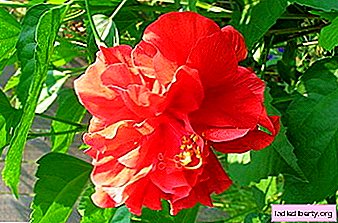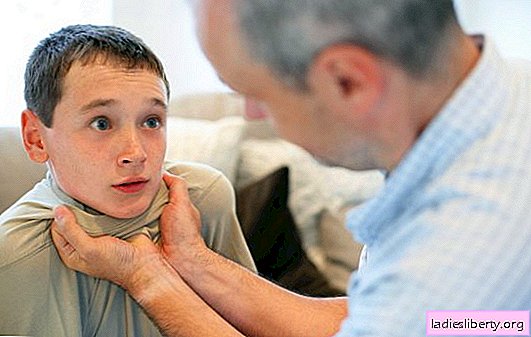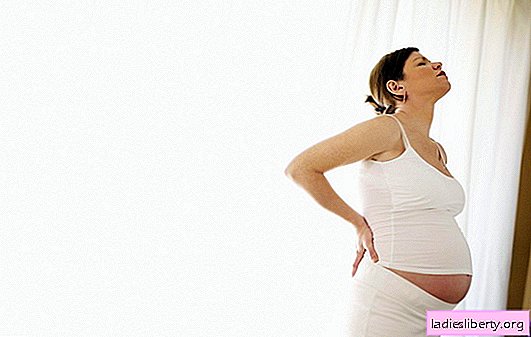
Facial biorevitalization is the most popular cosmetic procedure related to invasive methods of rejuvenation. With the help of hyaluronic acid injections, you can prolong the facial youth, eliminate wrinkles and restore skin elasticity. This technique is considered one of the most effective and effective in cosmetology.
The essence of facial biorevitalization

Biorevitalization is a procedure for injecting hyaluronic acid under the skin. It is well known that hyaluronic acid is a natural component of the human epidermis, the amount of which decreases with time. The lack of this component leads to undesirable consequences in the form of:
- Loss of skin elasticity;
- Dryness and flaking;
- Lack of moisture;
- Flabbiness of the skin;
- The appearance of wrinkles.
Biorevitalization is aimed directly at restoring the balance of hyaluronic acid in the epidermis.
Replenishment of hyaluronic acid in the skin from the very first procedure helps to cope with problems of pigmentation, lack of moisture. It is injections, that is, the introduction of acid molecules under the skin, are the most effective, as they stimulate wrinkle smoothing and slow down the aging process of the skin.
Types of biorevitalization

It is considered that biorevitalization is an extremely invasive procedure. However, technology does not stand still, continuing to develop, and new methods of carrying out cosmetic procedures appear. So a biorevitalization session can be done in two ways:
- Using an injection;
- Special apparatus.
The most popular is injection biorevitalization, during which hyaluronic acid is injected under the skin with a syringe. These injections violate the integrity of the skin and leave small swelling - papules, passing a few days after the session.
Non-injection biorevitalization is carried out by the hardware method. To perform the procedure, a laser is injected, introducing hyaluronic acid with low-intensity laser radiation.
The only drawback of non-injection biorevitalization is the shorter duration of the effect.

Laser biorevitalization has several advantages compared with injections:
- Comfort;
- Painlessness;
- No side effects;
- Minimum contraindications;
- Preserving the integrity of the epidermis.
This method of biorevitalization is the most benign, it is even referred to the field of spa-procedures. However, using a laser is difficult to provide a sufficient amount of hyaluronic acid in the deeper layers of the skin, due to which the effect lasts less than after injection.
Used drugs

For biorevitalization, hyaluronic acid injections are routinely used. Some cosmetologists use not only classical preparations, preferring different manufacturers, who add useful substances to hyaluronic acid, which increase the effectiveness of the procedure.
The most common drugs used in biorevitalization:
- IAL-system ACP - Italian preparation for skin rejuvenation and treatment, suitable for all skin types;
- Jalupro and Jalupro HMW - a preparation of hyaluronic acid of increased concentration, containing amino acids: glycine, L-proline, L-lysine and L-leucine;
- Juvederm hydrate is an American-made drug containing mannitol in addition to hyaluronic acid, which protects the skin from the harmful effects of free radicals and protects the acid from rapid breakdown;
- Revofil Aquashine - a complex of peptides and hyaluronic acid with a classic anti-aging effect, allowing to eliminate age-related pigmentation and whiten the skin;
- Hyaluform is a Russian-made hyaluronic acid, stabilized by the three-phase method, which has a lifting effect and helps in the modeling of face shapes.
The effectiveness of each of these drugs has been proven and tested by many cosmetologists. It is necessary to choose a solution according to the needs of each client and according to the type of skin.
Indications for use

Not everyone is prescribing and advising the biorevitalization procedure. Women under thirty are not recommended injections without urgent need. The exception is a very dry skin type, in which the procedure can be carried out at the age of twenty-five to twenty-eight years.
Indications for biorevitalization:
- Dehydration of the skin and excessive dryness;
- Loss of elasticity of the epidermis;
- Small and mimic wrinkles;
- Skin damage caused by UV (ultraviolet rays);
- Deterioration of the surface of the skin due to smoking and stress;
- The need to restore the epidermis after surgery or serious cosmetic procedures;
- Age spots, dullness and unhealthy skin tone;
- Enlarged pores, abundant secretion of subcutaneous fat;
- Puffiness and bruises, as well as scars and stretch marks.
Among other things, the procedure helps to get rid of rosacea and accelerates skin regeneration. Despite the effectiveness and versatility of biorevitalization, the result is not instantaneous, but cumulative.
How is the biorevitalization procedure?

Before deciding on biorevitalization, it is necessary to become familiar with all aspects, including the process of the procedure. Depending on the method chosen, the session itself is different.
The procedure for injection biorevitalization is as follows:
- An anesthetic cream is applied to the skin for half an hour or an hour;
- Twenty minutes before the injections, the drug is taken out of the fridge so that it warms to room temperature;
- A thin needle under the skin evenly introduces hyaluronic acid over the area of the treated face area;
- The skin is cooled by applying anti-inflammatory antibacterial cream.
After the injections for another two or three days, redness, swelling, traces of injections and papules are observed. Treatments are carried out on a course of up to four sessions at intervals of two weeks or a month, depending on the condition of the skin.

Laser biorevitalization is carried out on a different system:
- The face is cleaned of makeup and disinfects the surface of the epidermis;
- Laser impinges on the skin impulse effect to open transport channels between cells;
- Apply a thin layer of gel with a low content of hyaluronic acid;
- The laser is switched to the mode of constant radiation, changing the wavelength and affect the skin of the face;
- Finally, a caring cream, lotion or serum is applied.
A non-injection variant of the procedure lasts about an hour and requires more frequent repetition. So the course of laser biorevitalization consists of three to ten sessions with an interval of one week.
Restoration and skin care

The effect of the biorevitalization course lasts up to six months and requires repeating the procedure to maintain the result. During this time it is necessary to follow the instructions of the skin care cosmetologist.
The recovery period during biorevitalization is practically absent. Nevertheless, experts recommend After each session, follow some rules:
- To wash better with water with a mild cleanser without solids and SLS;
- Use means to moisturize and nourish the skin;
- If necessary, apply to the face special, prescribed by a cosmetologist, antiseptics;
- The first few days it is recommended to drink plenty of liquids - at least two liters of water a day, excluding tea, coffee and juices.
Removing papules from the face will help healing cream with arnica extract.

Also available a number of prohibitions that will help prolong the effect of the procedures:
- During the day, do not touch the face with your hands;
- The first day after the procedure is prohibited to apply makeup;
- A few days is better to refrain from the use of alcoholic beverages;
- For two weeks you should not visit the baths, saunas, solarium or swimming pool;
- Plastic surgery is strictly prohibited;
- You can resume playing sports no earlier than in three days.
The result of biorevitalization will be noticeable after the entire course of procedures, but begins to manifest itself after the first two or three sessions, depending on the initial condition of the skin.
Cosmetologists strongly recommend giving up bad habits to maintain healthy skin.
The duration of the effect depends on the age, state of health, adherence to the rules for skin care and external factors, such as the environment.
Contraindications and possible complications

Despite the fact that biorevitalization is considered the most benign method of invasive cosmetology, it still has a number of contraindications. Neglect of restrictions may adversely affect not only the result of the procedure, but also the well-being of the client.
Contraindications to biorevitalization:
- Allergic reactions to the composition of injections;
- Oncological diseases;
- Pregnancy and lactation period;
- Severe dermatological diseases;
- The period of exacerbation of chronic diseases;
- Autoimmune diseases;
- Acute herpes form.
If you do not comply with the restrictions after the procedure, a number of complications can occur, which disappear on their own within ten days or several days with regular use of special creams containing arnica extract.
Experts advise to avoid carrying out the procedure biorevitalisation in extreme heat.

Among complications after the procedure appear:
- Bruises at the injection sites;
- Swelling of the face;
- Redness or blemishes on the skin;
- The appearance of papules;
- Excessive pallor;
- Small hematomas.
How often should biorevitalization be performed?

Biorevitalization, as a procedure with a cumulative effect, is conducted by courses. Between each course must take a break, the frequency of which depends on various factors:
- The state of the skin at the time of the first session;
- Skin type and structural integrity;
- The presence of skin diseases of the lung type;
- Periods of exacerbation;
- The age of the patient;
- Compliance with the rules of skin care;
- Diet and physical activity.
Usually, a break of one to two weeks or a month is taken between the procedures, and the period between courses lasts depending on the result obtained. To maintain the effect, it is recommended to carry out supporting procedures every six months, some require repetition after three months.
Pros and cons of biorevitalization

As with any cosmetic procedure, you must carefully weigh the pros and cons of biorevitalization. The decision should also be based on the condition of the skin and the need for its restoration.
The main advantages of the use of anti-aging injections:
- Fast skin rejuvenation;
- Elimination of external deficiencies;
- Short recovery period after sessions;
- Speed;
- Price availability;
- The use of substances in the composition close to the components of the epidermis;
- The absence or weak severity of complications;
- The possibility of the procedure at any time of the year;
- Accessibility to almost all ages.
In addition, biorevitalization helps to cope with the mass of the primary and main signs of aging of the skin, and also supports this condition and tone of the epidermis. However, there are a number of disadvantages of the procedure:
- The addiction of the skin to the composition of the drug;
- A considerable list of contraindications;
- Side effects in the form of inflammatory processes;
- Search for a professional in this field.
It is the last point that plays a significant role. Without the proper skills and a certain skill, the beautician can easily touch the facial nerve or severely damage the skin. Therefore, deciding on biorevitalization, first of all it is necessary to find a certified cosmetologist who is able to carry out the procedure according to all the rules.











